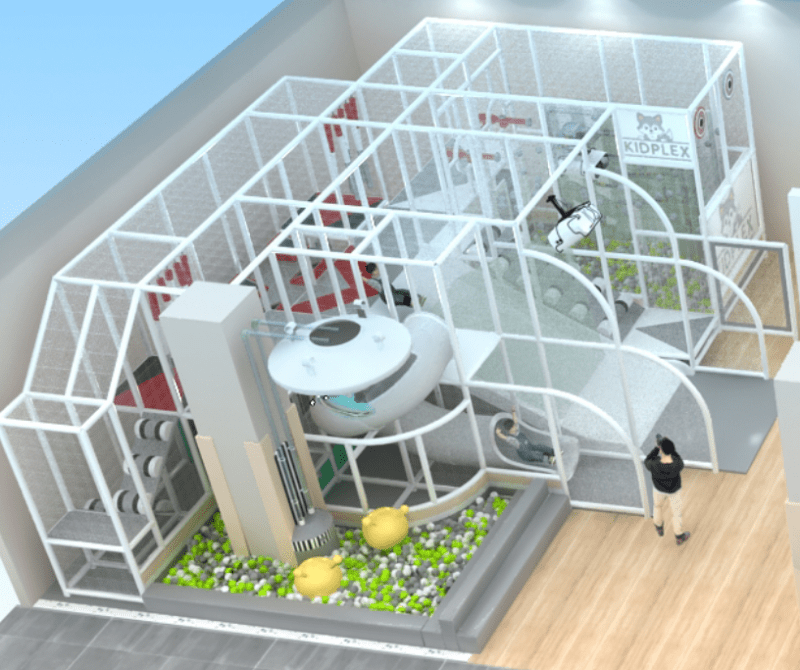interesting question.
I got involved in a tangle between UC-Davis and the city regarding some shade structures quite a while ago, while there were issues there, the primary concern the department had was the anchors that were originally specified weren't rated for cracked concrete and this was outside exposed to weather (probably SDC D or so), we got through it eventually. But nobody got into a whole "attractive nuisance" discussion about a Fraternity pledge class climbing it. It would never endure fall protection harness loads and we stated so clearly.
One would presume there's staff there that would oppose any excessive mischief, and it's not like it's sitting exposed to the open are, this is inside a building, they have doors that lock.
Here? Don't you need the building acceleration? This is on the second floor of something, so the second floor is where the load "comes from." The bases need to resist that acceleration induced load.
I think you're looking at point loading (mass acceleration) for all the pieces, once you arrive at the effective lateral acceleration. I don't see any other option, it isn't like you can lump the mass and it will somehow move through the model, not realistically anyway, it may math through the analysis software but it's not realistic.
Accidental torsion, how's that going to happen on this structure? Is there some kind of exception for something like this that can't really develop accidental torsion?
Alternately, can this be anchored to the walls as needed like a bookcase? This isn't exactly a building, and it's not furniture, but it could hypothetically topple, and it would be awkward to extricate the children, who might be injured if it collapsed.


